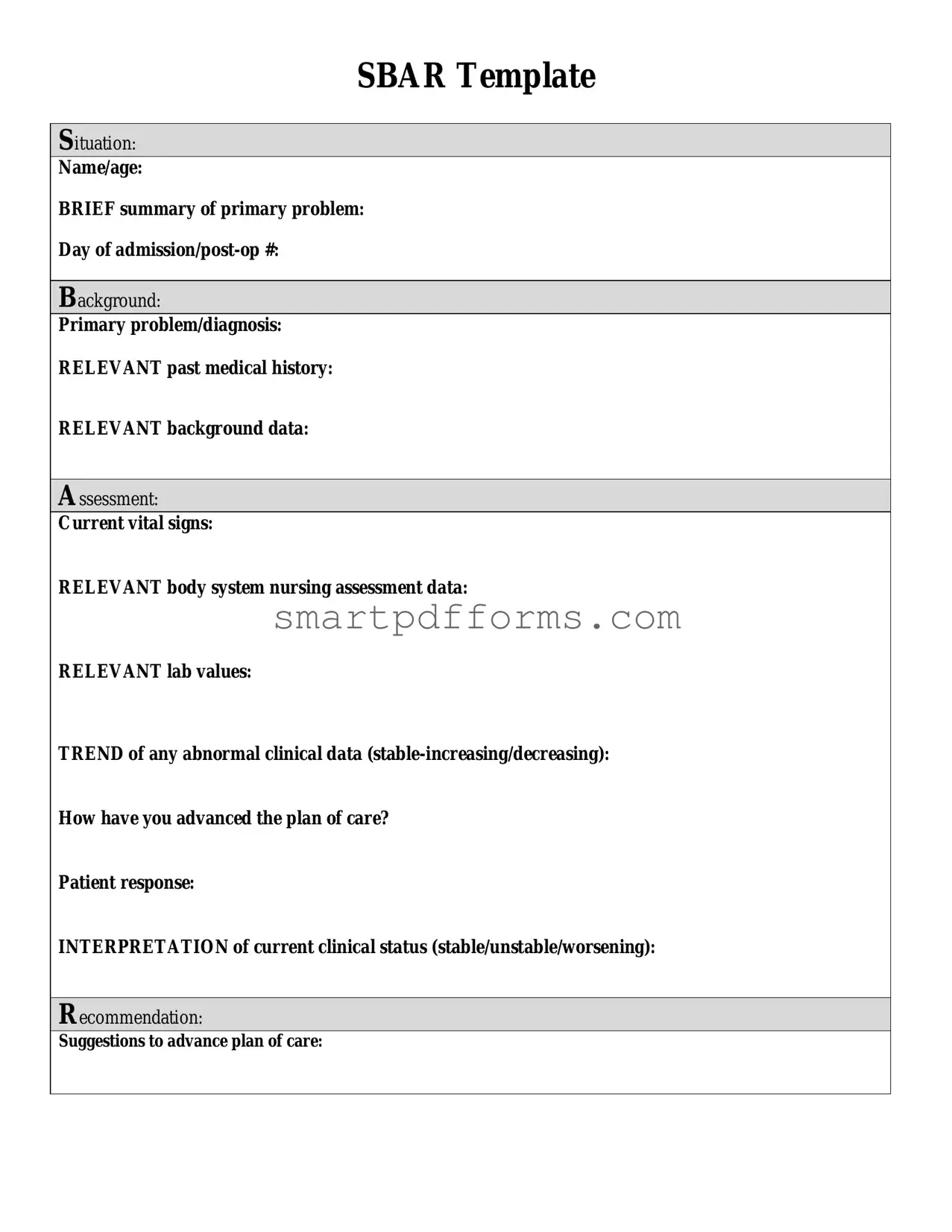In healthcare settings, effective communication is paramount, especially when it comes to patient care transitions. The SBAR (Situation, Background, Assessment, Recommendation) template is a tool designed to facilitate this crucial exchange of information among healthcare professionals. By structuring communication in a concise and organized manner, the SBAR form ensures that critical details about a patient's condition are clearly conveyed and understood. It prompts the provider to include essential information such as the patient's name, age, a brief summary of the primary problem, details of admission or post-operative day number, the primary diagnosis, relevant past medical history, and background data. Moreover, the Assessment section guides the healthcare professional to record current vital signs, relevant nursing assessment data, lab values, and any trends in clinical data, necessitating an evaluation of whether the patient's condition is stable, improving, or worsening. Finally, the Recommendations part of the form invites suggestions on how to advance the plan of care, offering a clear avenue for actionable steps that can be taken to address the patient's needs. This format not only streamlines the communication process but also enhances patient safety by ensuring that all team members have a comprehensive and up-to-date understanding of the patient's condition and care requirements.

